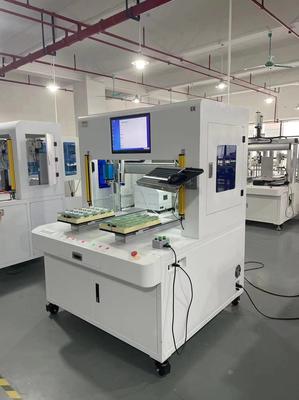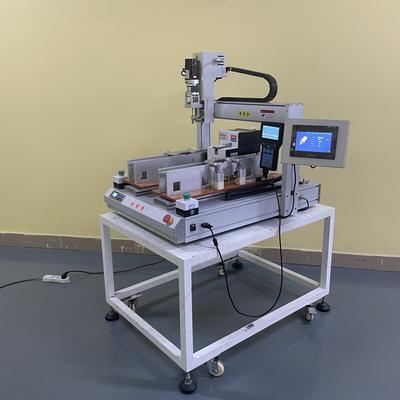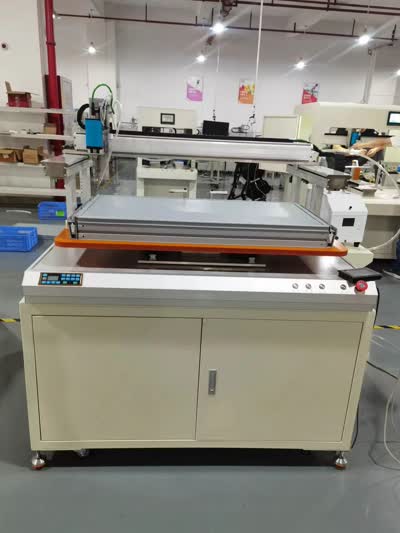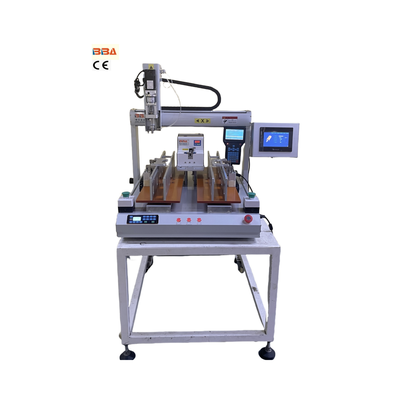A Beginner's Guide to Servo Screw Automation | Industrial Assembly

A Beginner’s Guide to Servo Screw Automation
In the rapidly evolving world of industrial manufacturing, efficiency, precision, and reliability are paramount. One technology that has consistently proven to be a cornerstone in achieving these goals is servo screw automation. For those new to the concept, this guide will walk you through the fundamentals, benefits, and key considerations of integrating this advanced automation solution into your production processes.
What is Servo Screw Automation?
At its core, servo screw automation refers to the use of sophisticated, programmable servo motors to automate the driving of screws and fasteners in assembly operations. Unlike traditional pneumatic or simple electric tools, a servo-driven system offers unparalleled control over every aspect of the fastening process. This includes precise control of torque, angle, speed, and even the sequence of multiple fasteners. The system typically consists of a servo motor, a controller, a drive bit, and sophisticated software that allows operators to program and monitor each fastening step with extreme accuracy.
Key Advantages for Modern Manufacturing
The adoption of servo screw automation brings a multitude of advantages that directly impact productivity and product quality.
First and foremost is precision and consistency. Human operators or less advanced tools can suffer from fatigue and variability, leading to under-torqued or over-torqued screws. These defects can cause product failures, recalls, and safety issues. Servo systems eliminate this variability by applying the exact same torque and angle every single time, ensuring every product is assembled to perfect specification.
Secondly, these systems offer enhanced traceability and data collection. In today's data-driven world, having a record of every assembly step is invaluable. Servo automation systems can log data for every screw driven, creating a complete digital history for each product. This is crucial for quality control, audit trails, and continuous improvement initiatives, helping to identify and rectify issues before they escalate.
Another significant benefit is a dramatic increase in production speed and efficiency. Automated systems can operate at incredibly high speeds without breaks, significantly reducing cycle times. Furthermore, they can be easily integrated into robotic arms or multi-spindle setups, allowing for the simultaneous driving of multiple screws and further accelerating the assembly line.
Operator safety and ergonomics are also greatly improved. Repetitive tasks like screw driving can lead to musculoskeletal injuries over time. By automating this process, workers are freed from monotonous and strenuous labor, allowing them to focus on more complex, value-added tasks, thereby improving job satisfaction and overall workplace safety.
Important Considerations for Implementation
While the benefits are clear, successfully implementing a servo screw automation system requires careful planning.
Begin by thoroughly analyzing your current assembly process. Identify the number of screws, the required torque specifications, and the accessibility of the fastening points. This will help determine whether a single-spindle, multi-spindle, or robotic-mounted solution is best suited for your application.
Choosing a system with an intuitive software interface is critical for smooth operation and quick changeovers. The ability to easily create, save, and recall different programs for various products is essential for flexible manufacturing.
Finally, consider the total cost of ownership. While the initial investment might be higher than traditional tools, the long-term savings from reduced scrap, higher throughput, lower warranty claims, and improved labor efficiency make servo screw automation a highly profitable investment.
Conclusion
Servo screw automation is no longer a technology reserved for high-end automotive or aerospace industries. It is a accessible, powerful, and transformative solution for manufacturers of all sizes seeking to improve quality, efficiency, and competitiveness. By providing unmatched precision, valuable data, and a safer work environment, it represents a significant step forward in the journey towards fully optimized, intelligent manufacturing. Embracing this technology is an investment in the future of your production capabilities.
| Product Name | Applicable industries |
| Dual Head Screwdriver | Industrial Control Panel Assembly |


